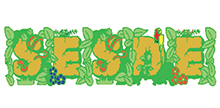Corporate sustainability assessment through fuzzy TOPSIS
- abcDepartment of Engineering and Architecture, University of Parma, Viale delle Scienze 181/A – 43124 Parma, Italy
Cite as
Bottani E., Rinaldi M., Solari F. (2018). Corporate sustainability assessment through fuzzy TOPSIS. Proceedings of the 6th International Workshop on Simulation for Energy, Sustainable Development & Environment (SESDE 2018), pp. 47-55. DOI: https://doi.org/10.46354/i3m.2018.sesde.008
Abstract
The aim of this paper is to propose a decisionmaking methodology that enables the analysis and evaluation of sustainability at the corporate level. The proposed methodology grounds on two tools, namely the technique for order preference by similarity to ideal solution (TOPSIS) approach and fuzzy logic. The integration of these tools offers an effective way to deal with two typical issues of sustainability assessment, i.e.: 1) the fact that the company’s performance should be frequently evaluated against qualitative key performance indicators; and 2) the fact that to be meaningful, the company’s sustainability performance needs to be compared to a reference value, e.g. a threshold or benchmark, to evaluating how the company is distant from a target. The proposed approach has been applied to a real firm, operating in the food machinery industry, for testing purpose. The main pros and cons of the approach are described.
References
- Andriantiatsaholiniaina, L.; Kouikoglou, V.; Phillis, Y. Evaluating strategies for sustainable development: Fuzzy logic reasoning and sensitivity analysis. Ecol. Econ. 2004, 48, 149–172.
- Associazioni Sindacali, Contratto Collettivo Nazionale di Lavoro (CCNL) Settore Metalmeccanico per le Lavoratrici & i Lavoratori addetti all’industria metalmeccanica privata & alla installazione di impianti. 2016. Available online: http://www.contrattometalmeccanici.it (accessed on 9 February 2017)
- Böhringer, C.; Jochem, P. Measuring the immeasurable—A survey of sustainability indexes. Ecol. Econ. 2007, 63, 1–8.
- Bossel, H. Indicators for Sustainable Development: Theory, Method, Applications; Balaton Group (International Institute for Sustainable Development): Winnipeg, MB, Canada, 1999.
Available online: http://publ.ext.zalf.de/web/lsa_ergebnisse_agstruk_indikatoren/pdfs%5Cbalatonreport.pdf (accessed on 28 January 2017) - Bottani, E.; Gentilotti, M.C., Rinaldi, M. A fuzzy logicbased tool for the assessment of corporate sustainability: a case study in the food machinery industry. Sustainability, 2017, 9(4), DOI: 10.3390/su9040583
- Chen, S.J.; Hwang, C.L. Fuzzy Multiple Attribute Decision Making: Methods and Applications. Springer-Verlag, Berlin, 1992
- Colla, V.; Branca, T.; Vannucci, M.; Fornai, B.; Amato, A. Quantitative sustainability assessment through key performance indicators in ULCOS project. In Proceedings of the 2nd International Seminar on Society & Materials (SAM2), Nantes, France, 24– 25 April 2008.
- CSR Manager Network Italia & Istat, Oltre il Dato Finanziario: Imprese & Benessere Collettivo.
2013. Available online: http://download.terna.it/terna/0000/0064/05.pdf (accessed on 9 February 2017) - Dyllick, T.; Hockerts, K. Beyond the business case for corporate sustainability. Bus. Strategy Environ. 2002, 11, 130–141
- Fraunhofer Institute for Reliability and Microintegration, Energy-Using Product Group Analysis—Lot 5: Machine Tools and Related Machinery. 2012. Available online: http://www.eupnetwork.de/fileadmin/user_upload/Produktgruppen/Lots/Final_Documents/EuP_Lot5_Task3_March2012 .pdf (accessed on 31 January 2017).
- Goldman, T.; Gorham, R. Sustainable urban transport: Four innovative directions. Technol. Soc. 2006, 28, 261–273.
- Harris, J.; Kennedy, S. Carrying capacity in agriculture: Global and regional issues. Ecol. Econ. 1999, 29, 443– 461.
- Health and Safety Executive, European Comparison. 2016. Available online: http://www.hse.gov.uk/statistics/european/european-comparisons.pdf?pdf=european-comparisons (accessed on 31 January 2017).
- Hervani, A.; Helms, M.; Sarkis, J. Performance measurement for green supply chain management. Benchmarking 2005, 12, 330–353
- Istat, “Nero a Metà”: Contratti Part-Time & Posizioni Full-Time fra i Dipendenti delle Imprese Italiane. 2014. Available online: http://www.istat.it/it/files/2014/09/IWP-n.-3-2014.pdf (accessed on 14 October 2016)
- Kates, R.; Clark, W.; Corell, R.; Hall, M.; Jaeger, C.; Lowe, I.; McCarthy, J.; Schellnhuber, H.; Bolin, B.; Dickson, N.; et al. Sustainability science. Science 2001, 292, 641–642.
- Kouikoglou, V.; Phillis, Y. Application of a fuzzy hierarchical model to the assessment of corporate social and social sustainability. Corp. Soc. Responsib. Environ. Manag. 2011, 18, 209–219.
- Lancker, E.; Nijkamp, P. A policy scenario analysis of sustainable agricultural development options: A case study for Nepal. Impact Assess. Proj. Apprais. 2000, 18, 111–124.
- Phillis, Y.; Andriantiatsaholiniaina, L. Sustainability: An ill-defined concept and its assessment using fuzzy logic. Ecol. Econ. 2001, 37, 435–456.
- Phillis, Y.; Davis, B. Assessment of Corporate Sustainability via Fuzzy Logic. J. Intell. Robot.
Syst. 2009, 55, 3–20. - Pope, J.; Annandale, D.; Morrison-Saunders, A. Conceptualising sustainability assessment.
Environ. Impact Assess. Rev. 2004, 24, 595–616. - Sadler, B. A framework for environmental sustainability assessment and assurance. In Handbook of Environmental Impact Assessment; Blackwell: Oxford, UK, 1999; pp. 12–32.
- Searcy, C. Measuring enterprise sustainability. Bus. Strategy Environ. 2016, 25, 120–133
- Seuring, S.; Gold, S. Sustainability management beyond corporate boundaries: From stakeholders to performance. J. Clean. Prod. 2013, 56, 1–6.
- Singh, R.; Murty, H.; Gupta, S.; Dikshit, A. An overview of sustainability assessment
methodologies. Ecol. Indic. 2009, 9, 189–212 - Ugwu, O.O.; Haupt, T.C. Key performance indicators and assessment methods for infrastructure sustainability—a South African construction industry perspective. Build. Environ. 2007, 42, 665–680.
